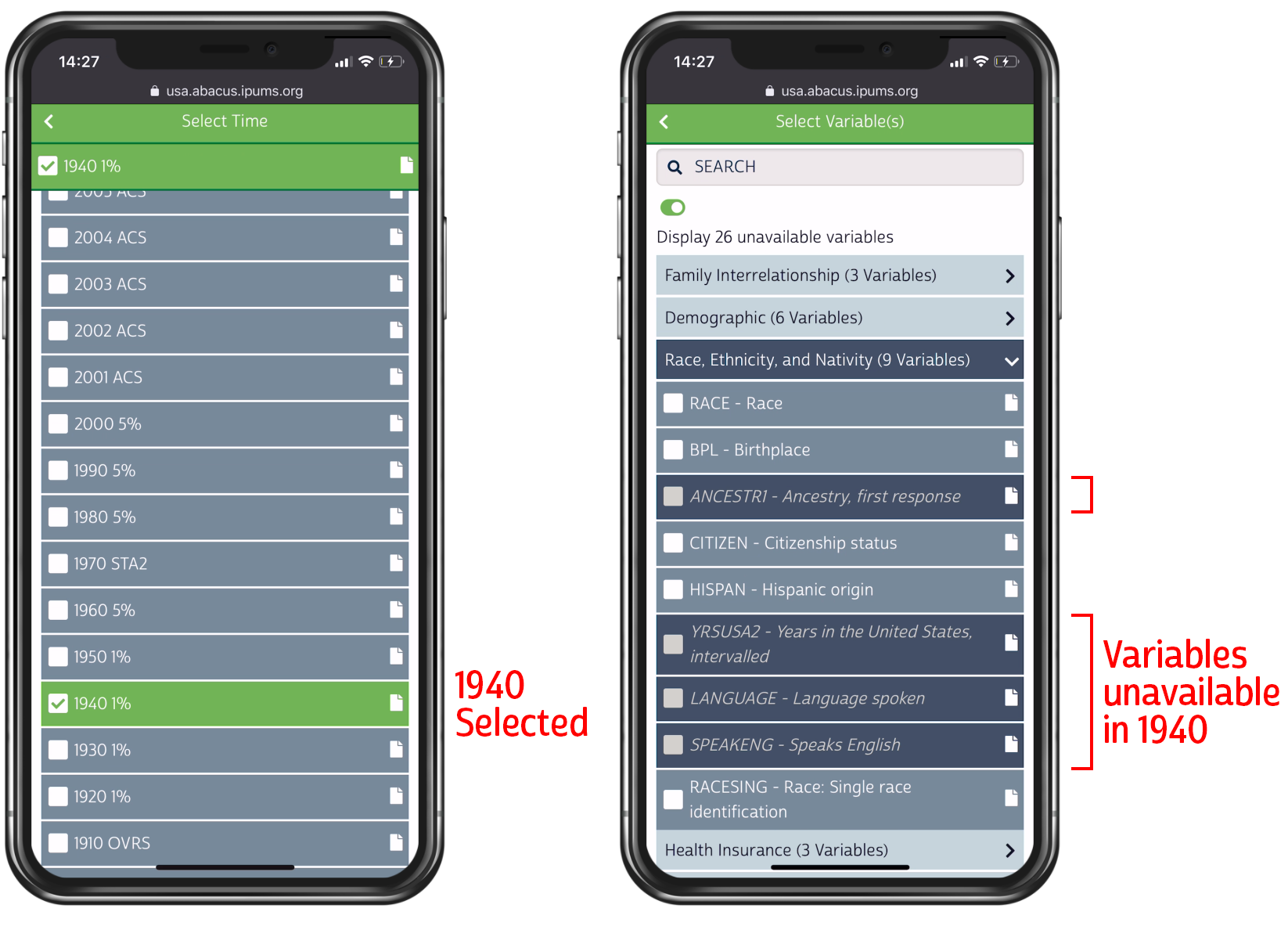

Additional chapters in this volume cover sample designs, sampling errors, occupational coding, and family interrelationship codes. This introduction to the database is essential reading for all prospective users. Volumes IV and V consist of a complete descriptions of all the data transformations we carried out to create IPUMS USA. Volume III provides enumerator instructions, replicas of the census forms, procedural histories of the censuses, and descriptions of missing-data allocation procedures and other post-enumeration processing. Volume II includes supplemental information on some of the more complicated variables, such as maps and coding schemes for the geographic areas identified in the samples, and alternate occupation and industry coding schemes available for particular census years. Volume I covers minimum information most users require to use the database, including the overall design of the database, variable descriptions, and coding schemes for each variable. The IPUMS documentation is divided into five volumes.
IPUMS CODEBOOK FULL
A full listing of available variables can be found in the documentation section entitled "Variable Availability." For the period since 1960, the data series also provides detailed housing characteristics. In general, the later census years provide a greater range of characteristics than the earlier ones, though the earlier censuses often contain greater detail for the variables that are available.

The information available in each sample varies according to the questions asked in that year and by differences in post-enumeration processing. The data series includes information on a broad range of population characteristics, including fertility, nuptiality, life-course transitions, immigration, internal migration, labor-force participation, occupational structure, education, ethnicity, and household composition. Therefore IPUMS USA is inappropriate for research that requires the identification of specific small geographic areas in those census years. Most important, the microdata records for the period since 1950 identify no geographic areas with fewer than 100,000 inhabitants (250,000 in 19). To further ensure that no individuals can be identified, the Census Bureau limits the detail on place of residence, place of work, very high incomes, and several other variables. The IPUMS USA samples for these years include no names, addresses or other potentially identifying information. For the period since 1950 census microdata are subject to strict confidentiality measures that limit their usefulness for some applications. Microdata do pose some limitations, however. The flexibility offered by microdata is particularly important for historical research because the aggregate tabulations produced by the Census Bureau are often not comparable across time, and until recently the subject coverage of census publications was limited. Since IPUMS USA includes nearly all the detail originally recorded by the census enumerations, users can construct a great variety of tabulations interrelating any desired set of variables. This makes it possible for researchers to create tabulations tailored to their particular questions. IPUMS USA supplies microdata, which means that it provides information about individual persons and households. Most population data - especially historical census data - have traditionally been available only in aggregated tabular form. Public Use Microdata Series Source Materials.

Constructed Variables on Family Interrelationships.Occupational and Industrial Classifications.Variations in Group Quarters Definitions.IPUMS USA, like other IPUMS projects, assigns uniform codes across all the samples and brings relevant documentation into a coherent form to facilitate analysis of social and economic change. This had complicated efforts to use them to study change over time. However, because different investigators created these samples at different times, they employed a wide variety of record layouts, coding schemes, and documentation. These samples collectively constitute our richest source of quantitative information on long-term changes in the American population. Some of these samples have existed for years, and others were created specifically for the IPUMS USA database. IPUMS USA (originally, the "Integrated Public Use Microdata Series") is a website and database providing access to over sixty integrated, high-precision samples of the American population drawn from sixteen federal censuses, from the American Community Surveys of 2000-present, and from the Puerto Rican Community Surveys of 2005-present.


 0 kommentar(er)
0 kommentar(er)
